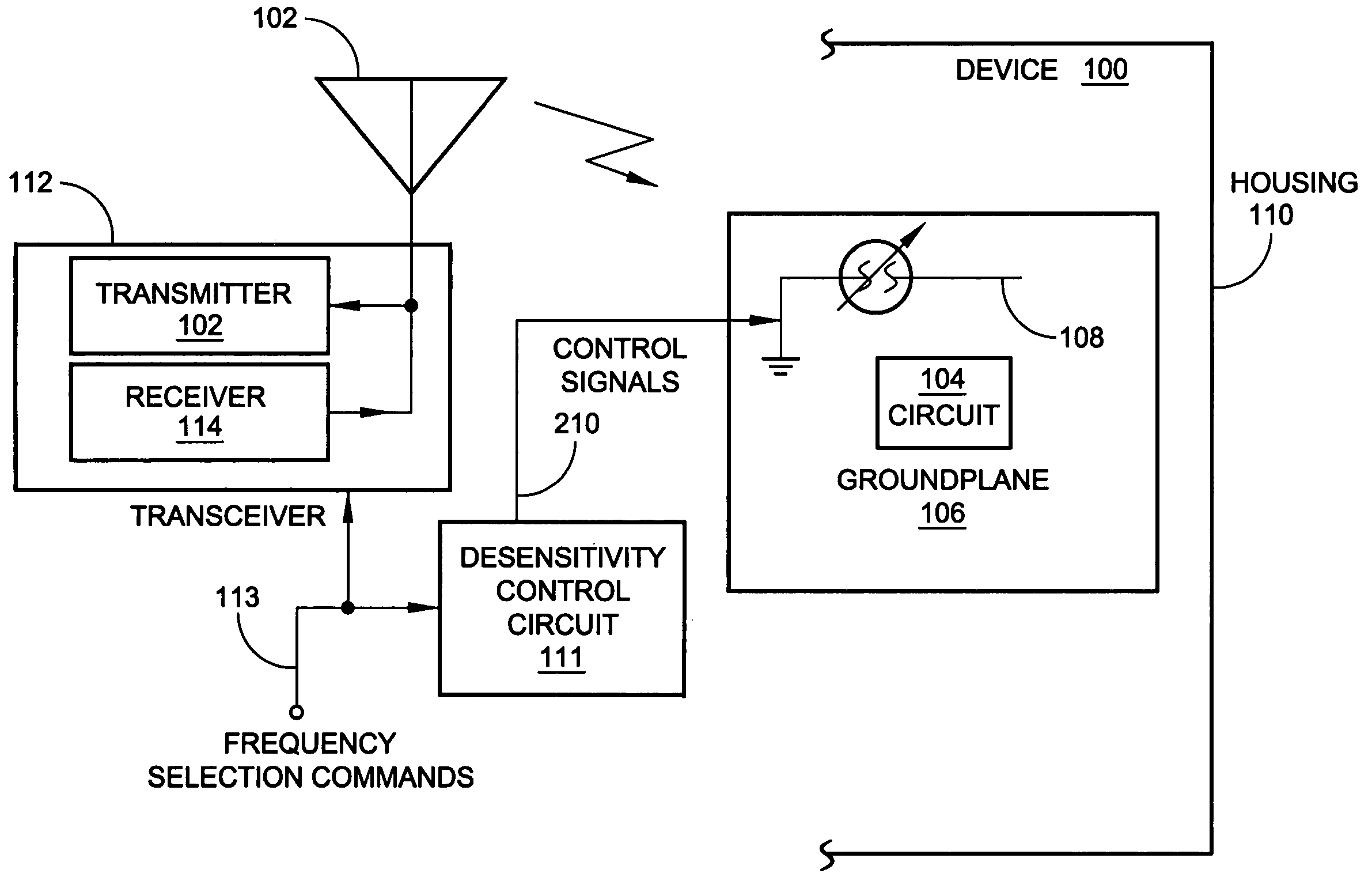Wireless device reconfigurable radiation desensitivity bracket systems and methods
a technology of radiation desensitivity bracket and wireless device, applied in the field of wireless communication, can solve the problems of counterpoise being susceptible to changes in the design and location of proximal circuitry, affecting radiation pattern and communication efficiency, and affecting radiation pattern and radiation-susceptible circuitry
- Summary
- Abstract
- Description
- Claims
- Application Information
AI Technical Summary
Benefits of technology
Problems solved by technology
Method used
Image
Examples
Embodiment Construction
[0031]The present invention describes a wireless communications device with a reconfigurable radiation desensitivity bracket that can be added to the groundplane of a circuit proximate to a radiation source such as an antenna, to minimize the effects of radiation-induced current. The bracket can be selectively tuned or switched in response to changes in frequency. Alternately considered, the bracket is space-reconfigurable to selectively redistribute current flow through the groundplane associated with radiated waves.
[0032]Accordingly, a method is provided for reconfigurable radiation desensitivity in a wireless communications device. The method comprises: generating a radiated wave at a first frequency; in response to generating the radiated wave at the first frequency, creating a maximum current per units square (I / units2) through a minimal area of an electrical circuit groundplane; generating a radiated wave at a second frequency; in response to generating the radiated wave at th...
PUM
 Login to View More
Login to View More Abstract
Description
Claims
Application Information
 Login to View More
Login to View More - R&D
- Intellectual Property
- Life Sciences
- Materials
- Tech Scout
- Unparalleled Data Quality
- Higher Quality Content
- 60% Fewer Hallucinations
Browse by: Latest US Patents, China's latest patents, Technical Efficacy Thesaurus, Application Domain, Technology Topic, Popular Technical Reports.
© 2025 PatSnap. All rights reserved.Legal|Privacy policy|Modern Slavery Act Transparency Statement|Sitemap|About US| Contact US: help@patsnap.com



